15 Surprising Facts About Coral Reefs We Bet You Do Not Know!
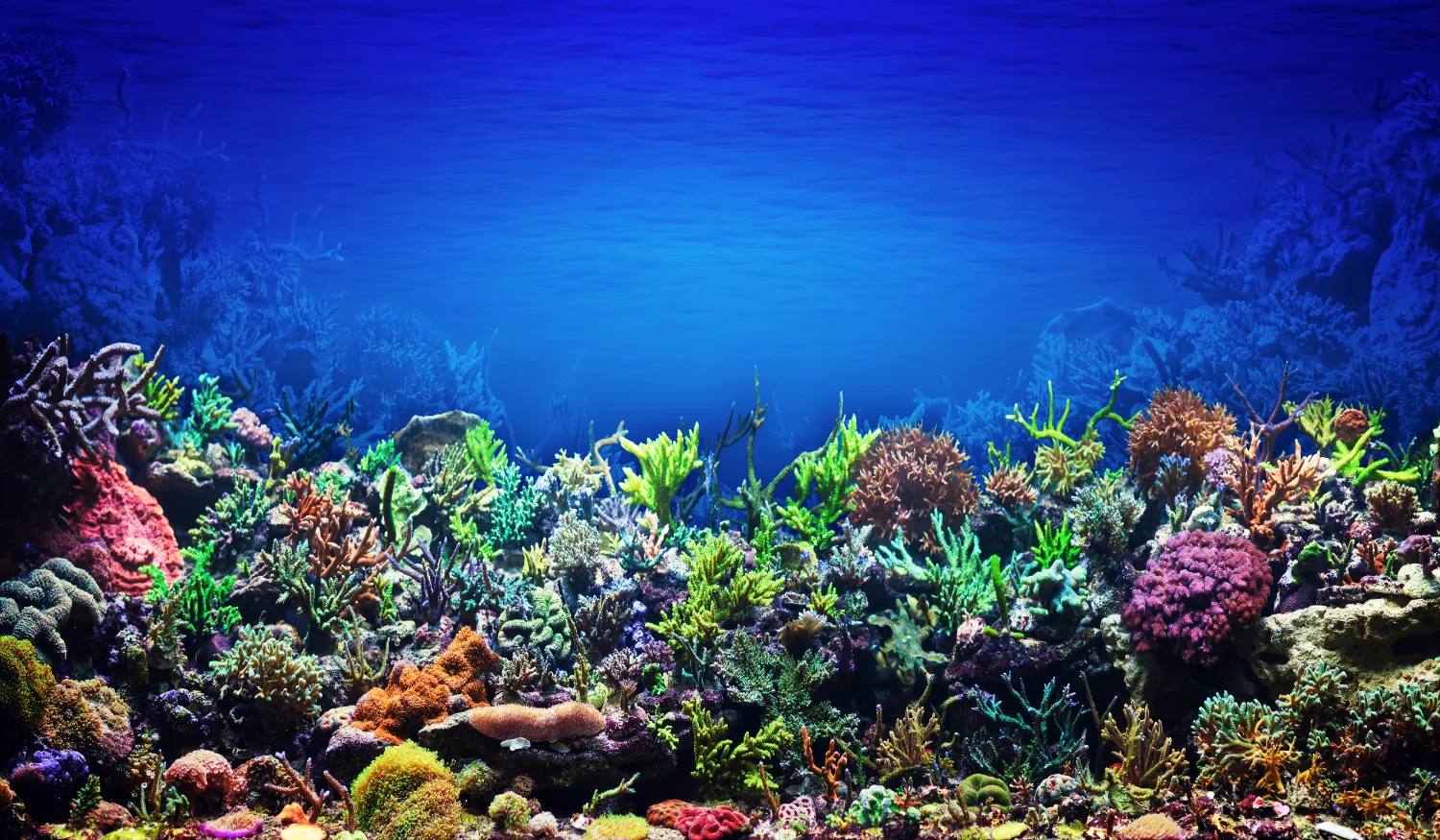
Updated On: November 25, 2023 by Raghda Elsabbagh
If you ever went snorkelling or scuba diving, then you’ve most probably stumbled upon a coral reef. But how much do you really know about these vibrant, colourful natural wonders?
Coral reefs are considered among the most biologically diverse ecosystems on Earth, rivalling even the biodiversity of tropical rainforests. They are home to an array of life forms, from corals and sponges to sea turtles and a vast number of fish species. Beyond their breathtaking beauty, there is much more to coral reefs than what meets the eye. Coral reefs play a vital role in preserving the marine ecosystem and life on Earth.
Let’s dive into the mesmerising world of coral reefs and prepare to be captivated by 15 facts about these fascinating underwater realms.
Corals Are Animals, Not Plants and Definitely Not Rocks
This confusion is not surprising. Yes, corals are mistaken for plants as they do look like little underwater rainforests rooted in the seabed, with their branch-like features. They are also misidentified as rocks because of the hard calcium carbonate skeletons they create around their soft, vulnerable bodies. However, they are actually animals!
A single coral reef is composed of thousands of individual corals known as polyps. Polyps are small cylindrical vase-shaped creatures, measuring only a few millimetres in diameter, and secrete calcium carbonate that forms an external shell. Over the course of the years, the polyps grow and divide to form large colonies, which serve as the building blocks of sophisticated coral reefs. The colonies can be as huge as a car or a house.
While they may not look alike, corals are related to jellyfish and anemones, all belonging to the phylum of Cnidarians, a group of ocean-dwelling creatures characterised by tentacles that sting. Marine biologists consider jellyfish and corals as cousins!
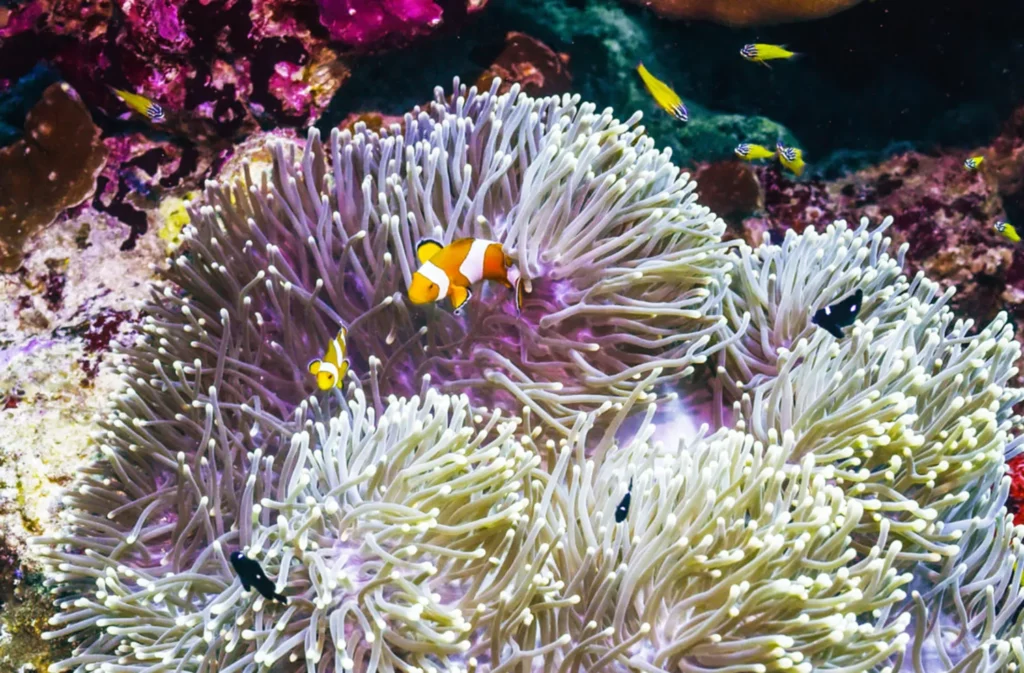
Since Corals Are Animals, They Can Eat
Like their jellyfish counterparts, coral polyps have stinging cells in their tentacles that allow them to catch, debilitate and feed on their small fish prey and plankton, microscopic marine organisms that cannot propel themselves against water currents. They also feed on micronutrients floating in the water.
Another food source comes from the mutual symbiotic relationship between coral polyps and algae. Tiny algae use corals as homes, and in return, algae use their photosynthesising ability to harness the sunlight and make food for the coral. Now, that is relationship goals!
Corals Can Also Move … Animals, Remember
While adult corals remain fixed to the ocean floor, their larvae possess the ability to swim. During reproduction, corals release sperm and eggs into the water, which fertilise to form small swimming coral larvae. These baby corals can ride ocean currents until they discover a suitable location to settle. Once they find an adequate spot, they will swim downward and attach themselves to the seabed, growing and developing into new coral colonies. This unique mobility in the early stages of their life cycle allows corals to colonise new areas and contribute to the expansion of coral reefs.
Corals Species Come in All Colours, Shapes, and Sizes
There are hundreds of different coral reef species that differ in formation, structure, colours, shapes, and sizes. In general, coral reefs are classified into 4 main types: fringing, barrier, platform, and atolls or circular reefs.
A. Fringing reefs, also called shore reefs, grow near the shore and thrive in shallow water, like the Red Sea corals.
B. Barrier reefs, unlike fringing reefs, are densely populated away from the shore, particularly when the seabed sharply drops, like the Australian Great Barrier Reef.
C. Platform reefs can grow on the continental shelf, in the open ocean where the seabed rises close enough to the ocean’s surface. Platform reefs, also called patch reefs, grow in all directions in a radial pattern. They are also commonly found within atolls.
D. Atoll Reefs are circular reefs that have a lagoon in the middle and are often mistaken as islands as they are so large and generally appear on a lagoon rim. Atolls can grow in millions of years. These reefs are found in the Pacific and Indian Oceans. The Maldives, for instance, is a series of 26 atolls forming an archipelago.
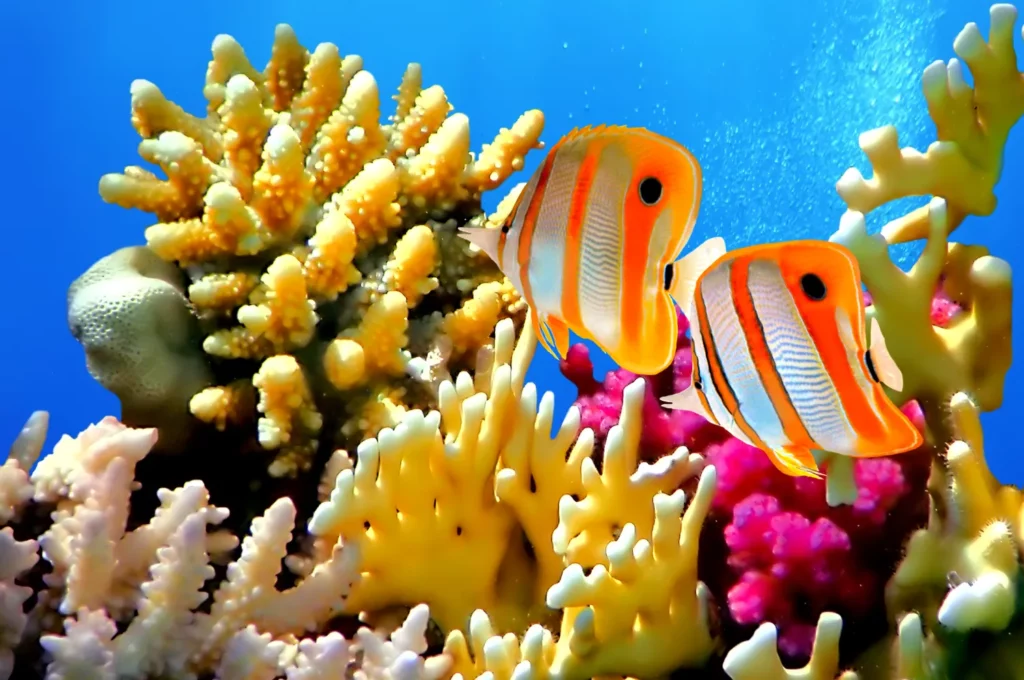
Colours
Corals’ vibrant colours are breathtaking and marine tourism is mainly attributed to this facet. However, credit in that aspect goes to the algae that live within the corals, particularly a type of algae called zooxanthellae. As we mentioned before, algae and corals have a mutually symbiotic relationship; zooxanthellae live inside the polyps’ tissues and produce nutrients for the polyps by their photosynthesising ability and polyps, in return, offer shelter and protection to the algae.
Zooxanthellae produce coloured pigments that exhibit different colours depending on their species and chlorophyll colour, and their colours can vary according to environmental changes, such as temperature and light conditions. Since polyps’ tissues are clear, zooxanthellae’s pigments are visible, and the corals get their beautiful colours.
Reefs that grow closer to the surface are brighter and more colourful since there is a higher intensity of UV rays, and algae can use more sunlight efficiently. Some corals can fluoresce by producing fluorescence pigments, and this is usually a protective mechanism that corals use as a shield against high UV intensity.
Shapes
Corals vary diversely in their shapes, and some are even named based on their unique shapes. Branching corals, for instance, grow outwards like tree branches. Mound and boulder corals grow as humungous mounds on the seabed; brain corals are similar to the human brain with their maze-like patterns; pillar corals grow as tall vertical structures that resemble skyscrapers in a city skyline, and mushroom corals resemble mushrooms tops.
Sizes
Corals can grow to be really, really enormous. You might have heard about the largest reef in the world, the Great Barrier Reef. Located in Australia, it is so gigantic; it is believed to be the same size as Texas and can actually be seen from outer space!
Corals are Very Busy, Supporting 25% of Ocean Life
Coral reefs represent less than 1% of the ocean but house over 25% of the entire world’s marine life. Millions of marine flora and fauna rely on this elaborate ecosystem. They’re basically called underwater rainforests because of the huge biodiversity they support, providing food, habitats, and protection for huge communities of marine creatures from algae, sea grass, fish, seabirds, starfish, clams, and eels to seahorses, dolphins, sharks, turtles, crustaceans, and many more.
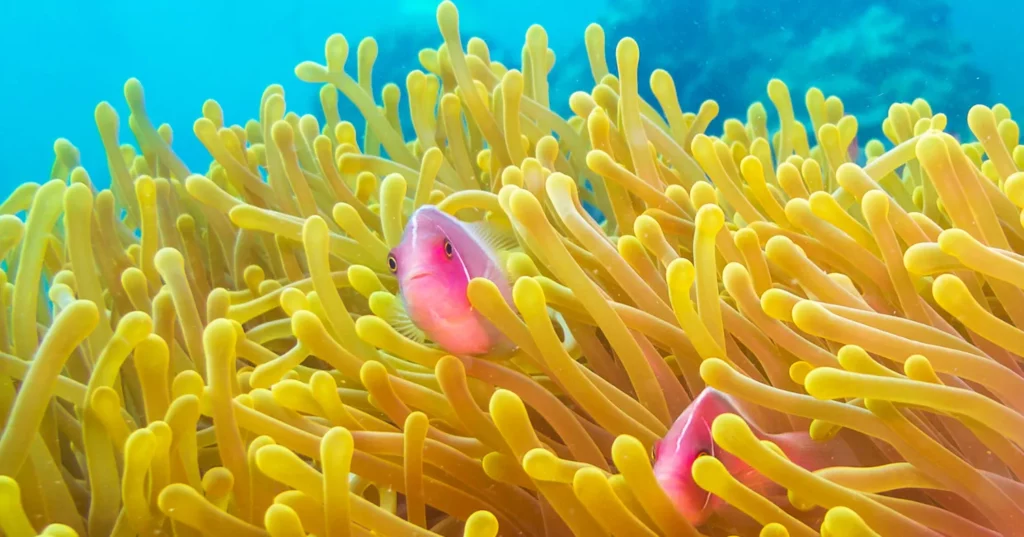
Corals LIKE the Sun, but They Do Not LOVE It
Corals need sunlight to grow. Or more specifically, the algae hosted by corals need abundant sunlight to photosynthesise to provide corals with the nutrients they need. That is why clear, warm, and shallow water with sufficient oxygen is where corals thrive. It is most likely that you find corals shallower than 70 metres where sunlight can easily reach them.
Corals have adapted to grow sideways and outwards instead of growing vertically in the water to prevent newer corals from being exposed outside the water, especially when seawater levels vary due to global temperature fluctuations. This also allows that each layer of polyps gets an equal share of sunlight and nutrients as their neighbours.
However, too much of anything invites the beginning of a mess. Too much heat and sunlight will over warm the water, and coral reefs will start to expel the residing algae that are essential for their survival. This action causes the algae to lose their bright colours and will eventually turn white, a process known as bleaching. When the coral reef is bleached, it dies. Unfortunately, four major coral bleaching events in the last 20 years left some coral reef ecosystems completely ruined.
A Few Types of Corals Prefer the Deep and the Cold
You would probably never see these types of corals unless you are an expert diver. These deep-sea lovers do not rely on their algae guests for photosynthesis, but they feed solely on dissolved food particles in the water. Scientists have found reefs up to 4000 metres deep in water as cold as 4 ºC.
Coral Reefs are Quite Picky With Their Water Environments
Corals grow mainly in strong water currents, and this was something that puzzled scientists because fast currents were avoided by most creatures. Then, they found out that strong currents better circulate cold water, thus stabilising the water temperature and preventing water from overheating— something that corals cherish.
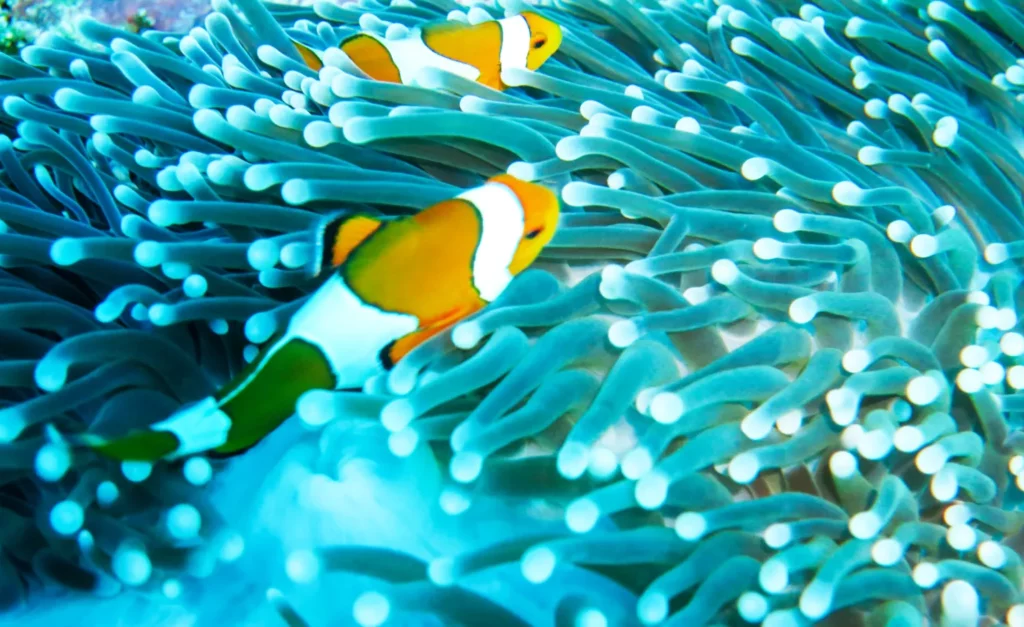
Corals are Really Ancient Creatures
The first coral reefs date back around 240 million years; that is even before the dinosaurs were alive! Coral reefs that exist today are between 5,000 -10,000 years old, such as the Great Barrier Reef. In good environmental conditions, coral colonies can live for thousands of years. In perfect, optimum conditions, they could live forever!
Corals are One of the Slowest-growing Species on Earth
From polyps all the way to the coral reef is a thousand-year-old story. A coral reef spreading for just a few square kilometres may need around 1 million years to grow. This explains why they have extremely long lifespans. Their growth rate depends on several factors, such as location, water quality, pollution, nutrition, etc., and it can range from 1cm to 10 cm per annum.
Coral Reefs Stabilise The Seabed and Protect Coasts
Coral reefs improve the seabed’s structural integrity by promoting the growth of seagrasses, which keeps the seabed intricately woven. This, in turn, reduces the impact of storms and tidal surges, effectively preventing land shifting and shoreline erosion. Even after corals die, they continue to offer essential protection against erosion, although their reef structures gradually dissolve over time.
This phenomenon allows corals to serve as nesting grounds for various marine species. It creates a haven for creatures to mate and lay eggs, and the abundance of seagrass makes coral reefs nurseries for marine mammals such as dugongs.
Coral reefs are also crucial for coastal protection. During storms, tsunamis, and hurricanes, they act as natural barriers, mitigating the impact of waves, protecting the coast, reducing erosion, and safeguarding communities. It now makes sense why water inside a lagoon is always calmer than water outside the reef. Research has shown a direct correlation between the health of coral reefs and the level of coastline protection in hurricane and storm-prone regions. Regions with healthy coral reefs were found to fare better during hurricanes and storm events, where damage to life and property was reduced by up to 57%.
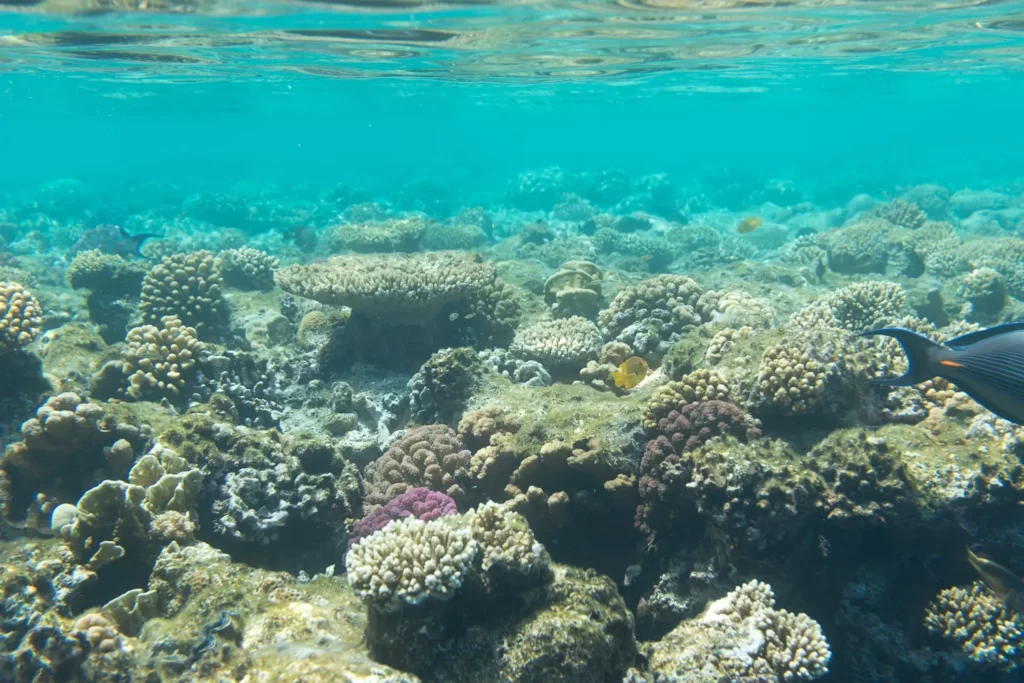
Corals Clean The Water They are In
You will never find corals in murky water! Corals have a built-in filtration system with minute sieves that filter particulate matter and debris from the water leaving it crystal clear. As the number of corals increases within a reef, they can process larger water quantities. Even when the polyp dies, filtration partially continues with its skeleton. This housekeeping ability positively influences the local ecology as they provide marine life with a clean environment free from pollutants and harmful chemicals. Fascinating, isn’t it?
Coral Reefs Possess Medicinal Properties
Since ancient times, corals have been used for medicinal purposes, but a wealth of medical secrets is still obscured within these gems. In ancient Indian medicine, coral calx, known as Praval Bhasma, was used to treat calcium deficiencies and bone disorders. Other cultures utilised powdered coral shells, rich in calcium carbonate, to alleviate digestion disorders. Nowadays, coral shells find application in bone grafting for complex fractures and the symptomatic management of diseases like AIDS and cancer. They are also used in physiotherapy to reduce pain. Finally, scientists have discovered proteins in corals with the potential to attack cancer cells.
However, due to the threat of coral extinction caused by pollution and climate change, there are strict regulations on the corals’ use in medicine, although some countries still permit their use in local or traditional remedies.
Corals Nurture the Tourism Industry
Coral reefs offer more than support for marine life; they also provide income for countries and millions of people. The vibrant colours, diverse marine life, and thrilling diving experiences offered by coral reefs make them highly sought-after destinations for tourists worldwide. Over 70 million tourists flock to coral reef locations annually, with activities like snorkelling and scuba diving being major attractions.
The tourism industry associated with coral reefs is valued at approximately $36 billion per year and is a significant driver of local economies. Countries, like Panama, with its tropical allure and oceanic wonders, benefit greatly from coral reef tourism, bringing in vital income for the region.
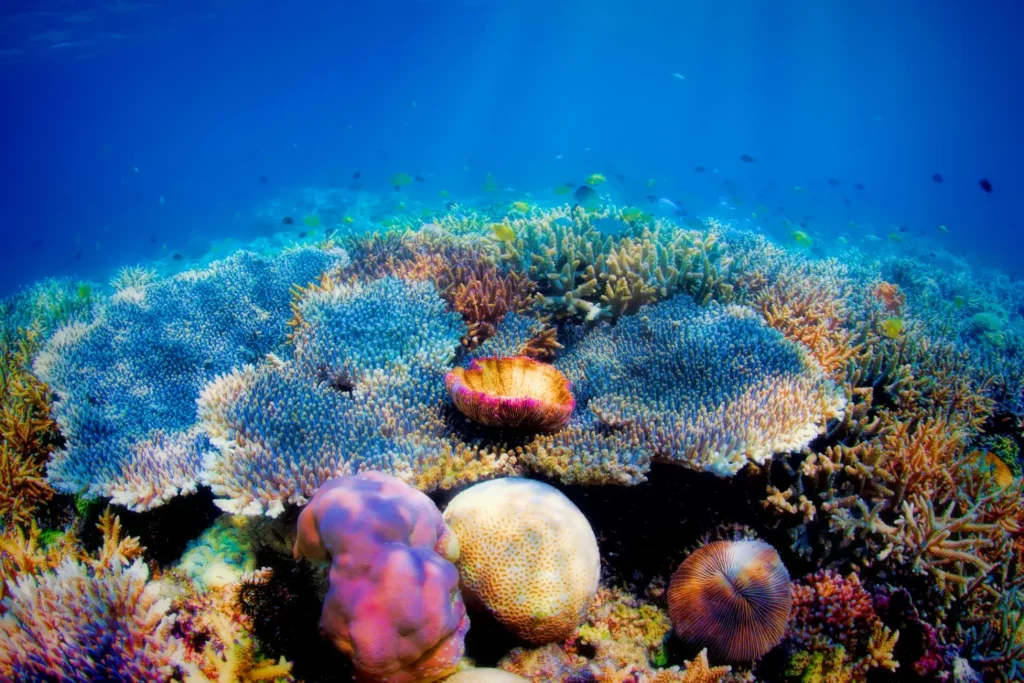
Sadly, Coral Reefs Are Endangered!
Pollution, oil spills, and, most importantly, climate change, which makes the water much warmer and very acidic, all add massive stress to our coral populations around the world. Coral bleaching is now happening more and more frequently and severely as oceans are warming up, leaving corals vulnerable and starving to death. It is anticipated that if action is not taken against global warming, coral reefs will be wiped out completely within a few decades, leaving everything on our planet at risk. Some countries, like Australia, Belize and Mauritius, have already taken action to protect their coral reefs.
Therefore, it is critical to contribute, even a little bit, to saving those precious creatures. Check out those simple tips:
1. When packing for your snorkelling trip, try to choose harsh-free chemicals such as reef-safe shampoos, soaps and sunscreens.
2. Do not touch or step on coral reefs. Remember, they are animals, and by doing so, you might disturb them or even kill them.
3. Never litter.
4. Avoid disrupting their sand, as this may smother the corals. So be mindful of where your diving fins hit.
5. Do not feed the fish. We know it is exciting to feed them, but this causes an imbalance in the natural ecosystem. Just admire them from afar and let them feed on their own sources.
6. It goes without saying but avoid buying or taking coral souvenirs or anything from the shore, dead or alive, even empty shells. Purchase sustainable souvenirs instead.
7. Always remember to ‘take nothing but pictures and leave nothing but bubbles.’
In a nutshell, coral reefs are a living testament to the marvels of our planet’s marine biosphere. Not only are they aesthetically stunning, but also they play an invaluable role in preserving the marine ecosystem and coastal areas. So, next time you are snorkelling in the ocean or walking along the beach and see these colourful reefs, we hope you think back to these coral facts, smile, and just take a picture.






